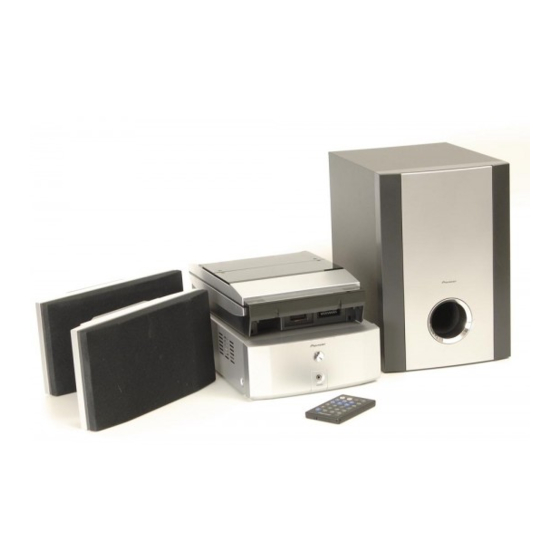Pioneer CT-F10 Manual de Instruções - Página 35
Procurar online ou descarregar pdf Manual de Instruções para Amplificador Pioneer CT-F10. Pioneer CT-F10 40 páginas. Stereo cassette deck
Também para Pioneer CT-F10: Manual de serviço (28 páginas), Instruções de serviço complementares (21 páginas), Manual de serviço (28 páginas)

You can protect an important recording against accidental
erasure by breaking the erase-protect tab(s) with a small
screwdriver.
If you want to re-record on an erase-protected cassette, cover
the space left by the broken tab with self-adhesive tape.
Note: If you're using Type II (High/CrO2) tapes, make sure
you don't also cover the tape-type detection holes.
To clean this unit, wipe with a soft, dry cloth. For stubborn
dirt, wet a soft cloth with a mild detergent solution made by
diluting one part detergent to 5 or 6 parts water, wring well,
then wipe off the dirt. Use a dry cloth to wipe the surface dry.
Do not use volatile liquids such as benzene and thinner which
may damage the surfaces.
If you need to move the unit, first switch it off and unplug
from the wall outlet. Avoid lifting or moving the unit during
playback or recording.
The CD pickup lens should not become dirty in normal use,
but if for some reason it should malfunction due to dirt or
dust, consult your nearest Pioneer authorized service center.
Although lens cleaners for CD players are commercially
available, we do not recommend using them since some may
damage the lens.
To maintain the recording/playback quality of the tape deck,
use a commercially available wet-type cassette head cleaner.
Avoid using dry-type cassette head cleaners.
Some cassette head cleaners are not designed
to work with auto-reverse decks and may become jammed in
the mechanism — ask your Pioneer authorized service centre
for details.
After using the head cleaner, leave the unit for 2–3 minutes
before playing a tape. This will give any excess cleaning fluid
a chance to dry.
The recording/playback head in the tape deck gradually
becomes magnetized after long periods of use. Playback and
recording quality will suffer as a result, with a lack of treble
and increased noise. To avoid the problem, we recommend
using a head demagnetizer at regular intervals. These are
available from any good audio dealer.
When using a head demagnetizer, be sure to turn the volume
right down and unplug any headphones to avoid damaging
the unit or the speakers. For further details, refer to the
instructions that came with the head demagnetizer.
The satellite speakers are magnetically shielded. This means
that they can safely be placed near a TV or monitor without
distorting the picture.
The subwoofer is not magnetically shielded. If it is placed very
near a TV or monitor, you may see color distortion in the
picture. Switch off the TV for about 30 minutes and move the
subwoofer further away from the television to solve the
problem.
You can use the satellite speakers with or without the grilles.
